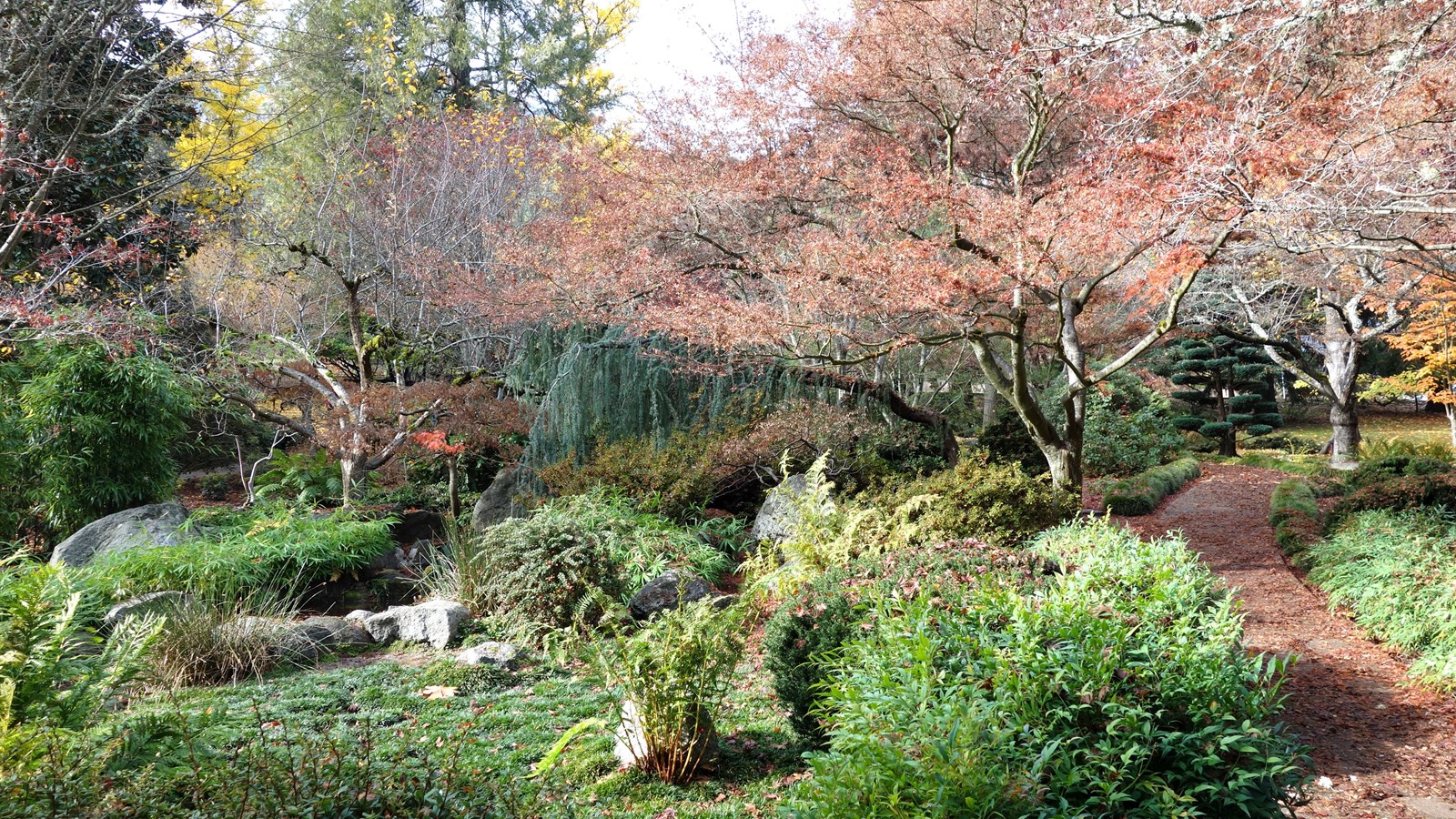Last updated: August 8, 2020
Place
Lithia Park

Photo by Daderot, CC0, https://commons.wikimedia.org/w/index.php?curid=37370771
Lithia Park, which began with eight acres in 1892 as a place where the Chautauqua Association could bring entertainment and culture to southern Oregon, has continued to grow and change along with the community that surrounds it. Its growth and development from a Chautauqua site (where the original Shakespeare theater began in 1935) to a complete reflection of the public parks movement makes it of great historical as well as landscape interest. Today 42 of its 93 acres are listed in the National Register. Visitors approaching Lithia Park will note the towering Tree of Heaven at the Plaza entrance planted in the 19th century by--according to legend--Abel Helman's Chinese cook. In 1908 at the urging of the Women's City Improvement Club, the people of Ashland passed a measure to include park maintenance in the City Charter.
The following year the old flour mill was torn down, a park board was elected, and additional acres bordering Ashland Creek were acquired. In 1910 the lower duck pond and waterfall feeding it were constructed, while Bert Greer, an ambitious newspaper editor conceived of making Ashland a world-famous spa by capitalizing on the Lithia springs of the area. The development of today's park began in 1914 with the hiring of John McLaren (also designer of San Francisco's Golden Gate Park) as landscape architect. Lithia Park embodies the distinctive characteristics of park design in the tradition of Frederick Law Olmsted. McLaren's landscape plan for Lithia Park was organic in layout, following the natural canyon of the water course. The plantings were naturalistic to the extent that native alders, oaks, conifers and madrones were incorporated, but other plants, such as willows, maples, sycamores, and numerous ornamental varieties were introduced and selected for hardiness, form and color. Once within the Park, the visitor can walk along the trail on the east side of Ashland Creek to the Park headquarters and obtain a map showing the location of both historic (e.g., 1915: Lithia Water Fountain, Butler-Perozzi Fountain Terrace, Sycamore Grove, Upper Duck Pond) and more modern park features including a trail guide to the most significant trees throughout the Park.
Lithia Park is located at 59 Winburn Way and is open to the public.
Discover more Oregon history by visiting the Ashland, OR travel itinerary.
